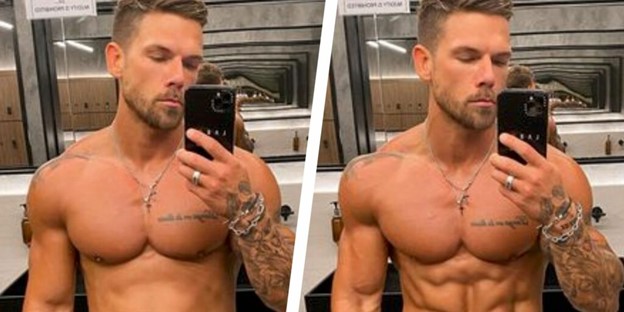By Arham Saeed
The rise of social media in the 21st century has significantly impacted numerous sectors, particularly those that are heavily influenced by appearance. The beauty industry instantly comes to mind, but fitness and athletics is another fascinating case in point.
As of 2024, there are over 320,000 fitness influencers on Instagram and over 220,000 on YouTube (Tagliaferro, 2024). With the tremendous increase in fitness influencers with the rise of image-focused social media platforms, the gym and athletic communities have changed, particularly regarding views of steroid use, diet, fitness, and what constitutes a “proper” lifestyle. With the increase in gym influencers, perceptions of what a “healthy” person looks like and is capable of have become almost unnatural. The constant bombardment of pictures and videos of trim and/or muscular physiques and personal weightlifting records very few can attain is standardizing high expectations (Buchanan et al., 2023). Ultimately, many youths are victims of these inflated expectations, resulting in adverse psychological effects and unhealthy mentalities and perceptions of themselves.
However, in reality, things are very different behind the scenes for these influencers, with countless factors contributing to what is ultimately presented on social media. In addition, influencers (and would-be influencers) not just presenting their content with the idea that people who enjoy fitness content will easily find their accounts; it is not that easy anymore. Now, it’s about cracking the algorithm, getting the right combination of content, hashtags, and likes to increase the possibility of viewers seeing their content as “suggestions for you.”
Influencers often use AI and filters, as altering the appearance of their progress (making it seem like they gained muscle faster than they did in reality, for instance) and adjusting images of their physique from natural to unnatural increases comments, likes, shares, and the chance of going viral (Buchanan et al., 2023). It also puts influencers on a pedestal, as they seem to have the ideal physique, making their advice valuable (Lee et al., 2022).
For photos and videos that go online, most fitness influencers have set conditions to make their physiques and progress seemmore significant than they actually are. Some examples include lighting, camera filters, mirror clarity, using angles and poses that enhance whatever feature they are focused on, and taking photos after a pump (muscle enlargement immediately after lifting). In Figure 1, a fitness influencer posted an example of this, where the only difference between the two photos is his posture and the tightening of his abs and chest for a good photo. This person doesn’t walk around in his everyday life looking as shredded (a lean, muscular body aesthetic) as he looks in photo two.

With a more unnatural or difficult to attain physique becoming more normalized, the “ideal physique” becomes ever more challenging to achieve and has led to many influencers turning to performance and image-enhancing drugs (PIEDs), such as steroids (Cox and Paoli, 2023). Not only do some fitness influencers use PIEDs, but they also encourage others to do so through advertisements and sponsorships. Steroids have harmful physical and psychological effects on the body, including hair loss, reduced tolerance (so users must increase their doses of steroids to continue gaining muscle), increased aggression, and altered hormone levels. They’re also illegal (unless medically prescribed), and to possess/use/distribute them is a criminal offence in Canada and the U.S.A. (Cox & Paoli, 2023). Nonetheless, they help fitness influencers attain the desired look needed to gain popularity and generate revenue. Steroids are typically self-administered via needles, which in itself poses health risks from improper sterilization-caused infections (Ferran, 2022; see Figure 2).

These deceiving perceptions that are conveyed are very destructive; viewers often begin to develop self-doubt, leading them to alternatives to simply working out more often or more intensely. In hopes of achieving the progress and looks that they “need,” many turn to steroids; currently, about 3 to 4 million Americans use PIEDs, including steroids (AlShareef et al., 2023). Others are impacted psychologically through decreased motivation, inspiration, and confidence, and increased stress due to the unrealistic expectations individuals develop regarding their fitness progress and self-image (Lee et al., 2022). Furthermore, the average individual is inclined to take the advice of and buy the products used by these influencers when these influencers are often only trying to make a profit. Influencers may not have their viewers best interests in mind or have any expertise that qualifies them to give advice on other peoples’ bodies and fitness. For this reason, it’s extremely important to refer to friends, family and professionals who likely have a more reasonable input since social media influencers are not verified based off how truthful they’re content is. Even taking a step back and thinking about the information presented to you can prevent you in engaging in an activity/scheme without your best interest in mind.
After consulting some of the youth in the Halton/Hamilton areas, it was evident that social media has had a massive impact on young athletes. Many said that social media has heavily altered expectations of how much weight they should lift, how they should look, and their overall performance. For example, one student mentioned that “315 [lb] is the new 225 [lb]” when discussing the average bench press weight (lb) they needed to achieve to be “valid” as a consistent gym-goer. This is the result of perceptions attained by more people posting their personal records (popularly known as PRs) on social media; the youth consulted noted that 225 lb used to be a milestone everyone aimed for to be considered “successful” at the gym. Moreover, many of the youth had considered taking Tren, an anabolic steroid, to help boost their gym performance. Tren, the full name of which is Trenbolone, has irreversible detrimental impacts on the male reproductive system. Speaking with these young gym-goers made evident the dangers of social media on youth perceptions, self-image, and decisions.
In essence, fitness influencers’ use of AI, filters, steroids and altered photos and videos cause adverse perceptions in the average individual who tries to stay fit and consumes the online content of these influencers. This effect may lead many to pursue harmful methods of building muscle to achieve these unnatural “norms.” It is important to understand that fitness influencers may use a variety of techniques to further their own agendas. Every individual is unique, so everyone’s goals will be different, and the time and effort needed to achieve them will vary; let this article serve as a reminder, especially for young people, to approach your fitness with patience and authenticity, focusing on your personal progress rather than unrealistic comparisons.
Source
AlShareef, S., Gokarakonda, S.B. and Marwaha, R. 2023. Anabolic steroid use disorder. StatPearls. Url: https://www.ncbi.nlm.nih.gov/books/NBK538174/ (accessed Feb. 19, 2024.)
Buchanan, J., Kim, H. and Eickhoff-Shemek, J.M. 2023. Fitness/wellness professionals as social media content creators and Influencers. ACSM’S Health & Fitness Journal 27(1), pp.41–44. Url: https://journals-lww-com.libaccess.lib.mcmaster.ca/acsm-healthfitness/fulltext/2023/01000/fitness_wellness_professionals_as_social_media.11.aspx (accessed Feb. 19, 2024).
Cox, L.T. and Paoli, L. 2023. Social media influencers, YouTube and performance and image enhancing drugs: A narrative-typology. Performance Enhancement & Health 11(4). Url: https://www-sciencedirect-com.libaccess.lib.mcmaster.ca/science/article/pii/S221126692300035X.
Darling, M. 2021. A fitness model’s “one second transformation” proves Instagram isn’t reality. Men’s Health. Url: https://www.menshealth.com/fitness/a36420354/fitness-model-abs-transformation-instagram-joss-mooney/ (accessed Feb. 19, 2024).
Ferran, N. 2022. Shoulder steroid injections explained. London Shoulder Surgeon | London Elbow Surgeon. Url: https://shoulderandelbowlondon.com/2018/11/01/steroid-injection-shoulder/ (accessed Feb. 19, 2024).
Lee, J.A., Lee, S.Y., Ryoo, Y., Kim, W. and Sung, Y. 2022. The psychological consequences of envying influencers on Instagram. Cyberpsychology, Behavior, and Social Networking 25(11), pp.703–708. Url: https://www-liebertpub-com.libaccess.lib.mcmaster.ca/doi/10.1089/cyber.2022.0001 (accessed Feb. 19, 2024).
Tagliaferro, L., 2024. 50+ essential fitness statistics, facts and trends (2024). Future Fit. Url: https://www.futurefit.co.uk/blog/fitness-statistics/ (accessed Feb. 19, 2024).

Hey, I’m Arham! I’m a second-year student at McMaster University studying Integrated Science and concentrating in Biology. My favourite hobby is basketball and I love Star Wars! I also have a passion for helping my community, which I do in countless ways. One example is my involvement with Dare to Be You(th) Charity as a Community Youth Council member.




